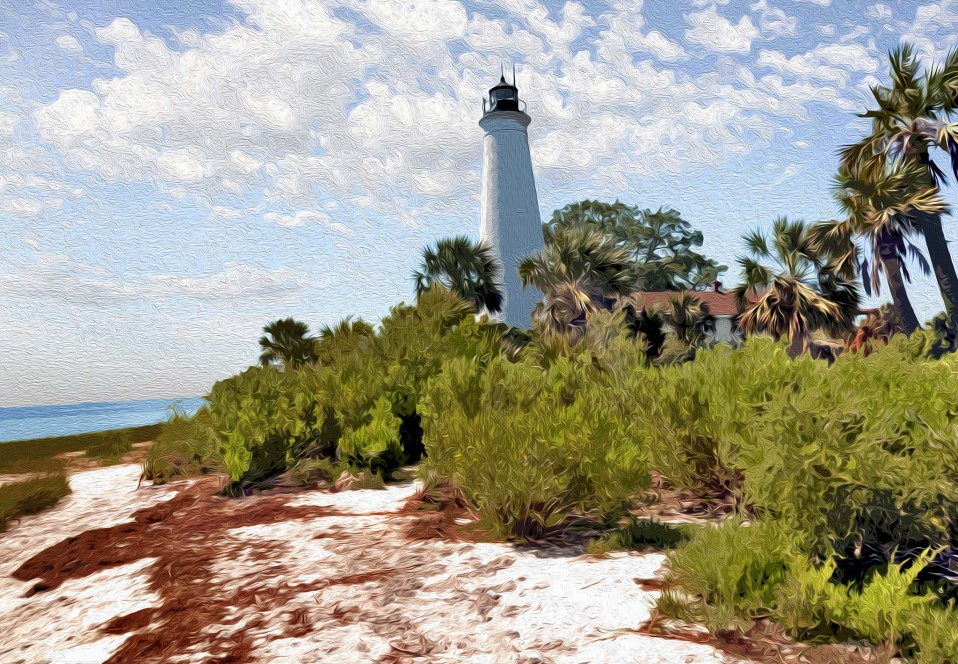One of my dear friends who also attended FSU saw this painting while I was working on it and flashed her bright teasing smile, “Hey I know that place. I’ve had sex there. Several times!” We giggled and did the high five. “Isn’t that what it’s there for?” Well no…but, ahem…for some of the lucky, yes! The St. Marks Lighthouse is south of Tallahassee—and a lovely 30 minute drive from the university town. Nestled on Apalachee Bay in the St Marks National Wildlife Refuge, the ever functioning lighthouse is both isolated and romantic. Especially on a full moon. But long before its tactical importance to memorable Saturday nights, Spanish conquistadors recognized the strategic significance of this section of the Gulf of Mexico because of the confluence of the St Marks and Wakulla River. In 1528, Panfilo de Narvaez marched here from (what is today) St. Petersburg. With no gold or riches discovered, be decided to return to his ships in southwest Florida on rafts he and his men made at the site. Eleven years later, Hernando de Soto followed in his footsteps on his way North, and in his wake came the Spanish missionaries hoping to bring Christianity to the Apalachee Indians. By 1693, Spain was developing the area as a province port and had established the San Marcos de Apalache fort (“St. Marks of Apalachee”). Centuries later, and decades before Florida’s statehood, the federal government also recognized the importance of the port city by building the St. Mark’s Lighthouse in 1832. By then Americans were settling the region and using the port. And because the densely forested coastline is so low and cluttered with oyster banks and shoals, they needed to mark the mouth of the St. Mark’s River. After that the guidepost became a target of Seminole Indians, Confederate Soldiers–and 180 years of hurricanes, tropical depressions, and mighty storm surges. But ya gotta believe those old Spanish Conquistadors would get a kick out of university students and their modern use of the place! I’m not sure they’d be all that interested in the 1931 establishment of the refuge to protect wintering migratory birds. And they were right, gold has still yet to be found here–but valuable treasures, including a wide diversity of habitats on some 43 miles of Gulf coastline in Wakulla, Jefferson and Taylor counties can still be discovered.
Small: 11.5” x 8” – $100.00 | Medium: 34.5” x 24” – $230.00 | Large: 46” x 32” – $410.00


